History of Egypt :
The geography of the ancient history of Egypt is very significant and is going to have a great influence on his art. Egypt is situated in the North-East of Africa and is very isolated from other countries because of its geographical location. Its limits are: to the west, the Libyan desert; to the east, the Arabian desert; to the north, the Mediterranean Sea and to the south, the Ethiopian massif and the Nubian desert.
The Nile River crossed from south to north, which will have great importance in the development of this ancient Egyptian civilization.
Egypt is divided into two zones: Lower Egypt, which is the northern zone, the delta zone, and Upper Egypt, which is the southern zone, starting from Memphis. These two zones will be iconographically represented by two flowers: the papyrus flower represents Lower Egypt, while the lotus flower represents Upper Egypt.
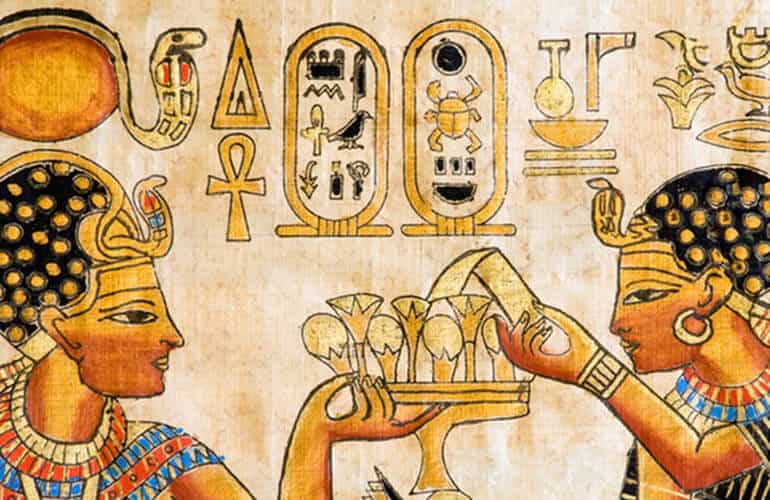
History of Ancient Egypt, Ancient Egyptian Writing
Writing has been a fundamental instrument for the knowledge of Egypt. It was not until the 19th century that it began to be known, starting with Napoleon’s invasion, which brought with it some French sages.
Egypt has a complex history, starting very early. The writing appears around the year 3000 and the Egyptians attributed their creation to the god of wisdom, Thot. There are three types of Egyptian writing:
Hieroglyphic writing, which is the best known. It is mainly monumental (associated with monuments) and is done in relief. It is going to have a very difficult interpretation (sometimes it is read from left to right and other times in the opposite way, etc.).
Hieratic writing, which is cursive writing, abbreviated from the previous one, more used in common life. It appears in the texts.
Demotic writing, which is faster and more popular. It is the one that appears later and is used in Egypt until the Roman invasion.
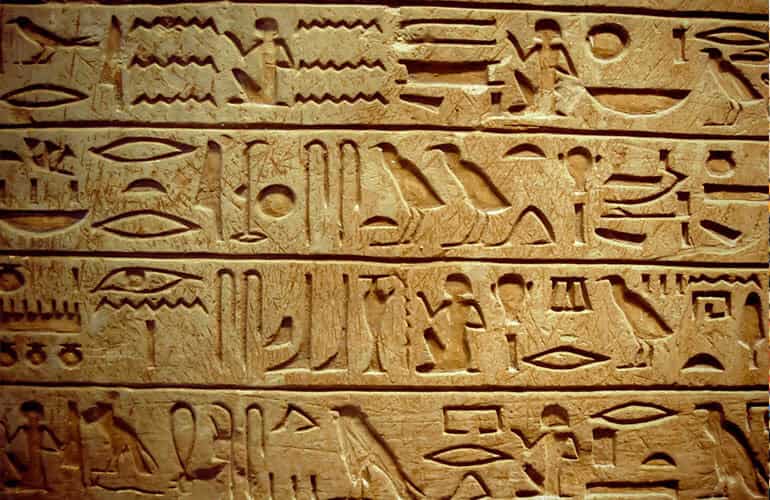
What is the Rosetta Stone meaning and why is it important?
Also fundamental to the knowledge of Egyptian culture was the appearance of the Rosetta stone, a city near the mouth of the Nile, and is a basalt stone that has a trilingual inscription, in Egyptian hieroglyphics, Greek and Egyptian demotic, which reproduces a decree of Ptolemy V Epiphanes and was interpreted by Champollion in 1822. Another fundamental fact for the knowledge of the Egyptian culture was the opening of the first inviolated tomb in 1923, that of Tutankhamun, by Carter and Carnavon, as well as the hundreds of excavations that are carried out from these moments.
Ancient Egypt It was divided into two areas, the so-called two lands or tow Kingdoms
The Kingdom of Buto, which is located in northern Egypt, is Lower Egypt. It is dedicated to agriculture and trade and its distinctive feature is a truncated red crown that is adorned with the cobra or aureus.
The Kingdom of Nekhen is in the south of Egypt, it is Upper Egypt. It is dedicated to livestock and is a more warlike people. Its distinctive feature is a tall white crown crowned by a vulture.
These two animals are sacred and protective of the Egyptians. There is a moment when the two kingdoms are going to merge, and with this merger, the predynastic period ends. This merger is due to King Menes, and from this moment on the king will be known as “Lord of the two lands”.
The chronology of Egypt is very complicated and not always all historians agree on it. It is usually based on the chronology that the Egyptian priest of the third century BC Manetho in the history of Egypt who wrote for Ptolemy II. This work was for a long time in the library of Alexandria but was lost with the fire that destroyed it in 49 BC, although both its chronology and its notes have been transmitted.
Ancient Egyptian Names
Throughout its history, Ancient Egypt was given different names, both by its inhabitants and by the neighboring foreign civilizations. The most widespread name in ancient times was (Kemet), which in the Egyptian language means “Black Land”, in allusion to the color of the slime rich in minerals and other nutrients brought by the annual flooding of the river. Other names of Egyptian origin are: (Taui) “the Two Lands” (referring to Upper and Lower Egypt)
Geography of Ancient Egyptian
The territorial division of the country into Upper and Lower Egypt dates from the Pre-Dynastic Period and refers to the valley area in the south and the delta in the north, respectively. This concept of duality is a constantly recurring feature of Egyptian civilization. High and Low refers to the fact that the Nile flows from the East African highlands (upstream) to the Mediterranean Sea (downstream).
Prehistoric Egypt
The Predynastic Period in Ancient Egypt
Archaeological evidence indicates that the Kemetic (ancient Egyptian) civilization began around the 6th millennium BC, during the Neolithic period ( the stone age ), when the first settlers of the Fayum A and Merimde cultures, all based on agriculture, settled. The Nile River has undoubtedly been the reference line for this culture since the nomadic hunter-gatherers began living on its banks as early as the Pleistocene, a period from which objects and symbols have been found engraved on the rocks throughout the Nilotic valley and the oases. After these cultures, the Badariense, the Amratiense (Naqada I) and the Greens (Naqada II) cultures were established, the last one achieving the cultural unification of the different clans during long periods of fights and alliances until the formation of two kingdoms: the upper and the Lower Egypt.
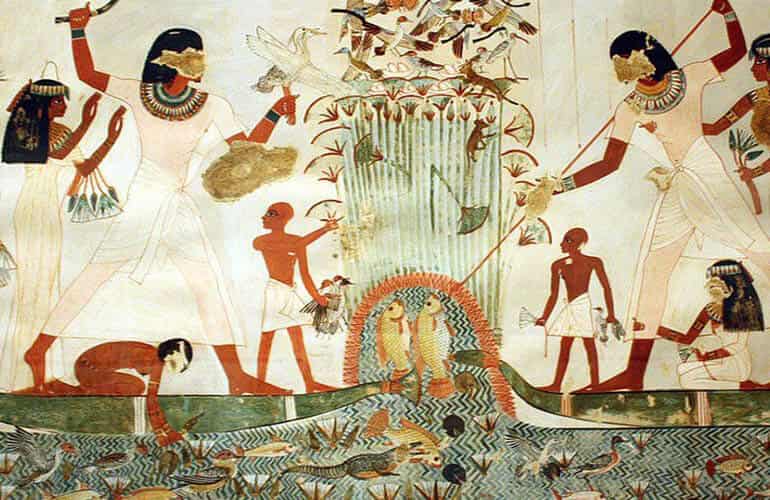
Photodynamic Period (Egypt)
Also known as Late Photodynamic, 0-Dynasty or Naqada III, the Protodynastic Period is the final stage of the Predynastic Period. It is at this time that the first cities such as Thinis, Pe and Nekhen, emerge, the first of which was the residence of the kings of Upper Egypt, known as the “followers of Horus“, who ruled in Upper Egypt. By the end of this period, Egypt was divided into small kingdoms, among which Hierakonpolis (Nekhen) in Upper Egypt and Buto (Pe) in Lower Egypt fought for supremacy. The process of unification was carried out by the kings of Hierakonpolis, with Menes being the founder of the First Dynasty.
Archaic Period Early Dynastic Period.
Also known as the Thinite period, the Archaic Period comprises the first two dynasties of unified Egypt with its capital at Thinite, hence its name. The royal lists of the period attribute the unification to Menes, who is King Narmer himself.
Old Kingdom
The period between the Third Dynasty and the Sixth Dynasty of Egypt. The first great flowering of the Egyptian culture was reached during this period. This was the time of the construction of the great pyramids as well as the appearance of the first complete hieroglyphic texts. At the end of this period, the central power was weakened and Egypt entered the phase of its history known as the First Intermediate Period. [ Read more about old Kingdom ]

First Intermediate Period of Egypt
from the Eleventh Dynasty to the seventh Dynasty of Egypt pointed out by Manetho, does not correspond to any of the known historical kings. Towards the end of this period, Egypt was ruled by two parallel and antagonistic local dynasties: the Tenth Dynasty, with its capital in Heracleopolis, to the north Around 2040 B.C., King Mentuhotep II of the 11th Dynasty gained control of the entire country, inaugurating the Middle Kingdom.
Middle Kingdom
Period comprising the XI-XII Dynasties, from 2040-1780 B.C. The XII Dynasty inaugurated the second stage of the flourishing of the Egyptian culture. During his reign, the first great works of Egyptian literature were written, in the stage of development of the language known as Middle Egyptian. After the XIIth Dynasty, the centralized authority over the whole country weakened again, thus entering the Second Intermediate Period. [ Read more about middle Kingdom ]
Second Intermediate Period of Egypt
from 13th – 17th Dynasties, 1780-1550 B.C. During this stage a series of local rulers take control of the delta (14th Dynasty). Around 1650 BC the rulers of an Asian settlement in the delta gained control of most of the country. The Egyptians called these kings Hyksos, meaning ” the foreign “, from the 15th Dynasty. At the same time, in the Thebes area in the south of the country, the 16th and 17th native dynasties followed one another. After a series of struggles that lasted about two decades, the last king of the seventeenth dynasty managed to expel the Hyksos and re-establish the unified government of the country. The success over the Hyksos inaugurated the 18th Dynasty and the period of Egyptian history known as the New kingdom.
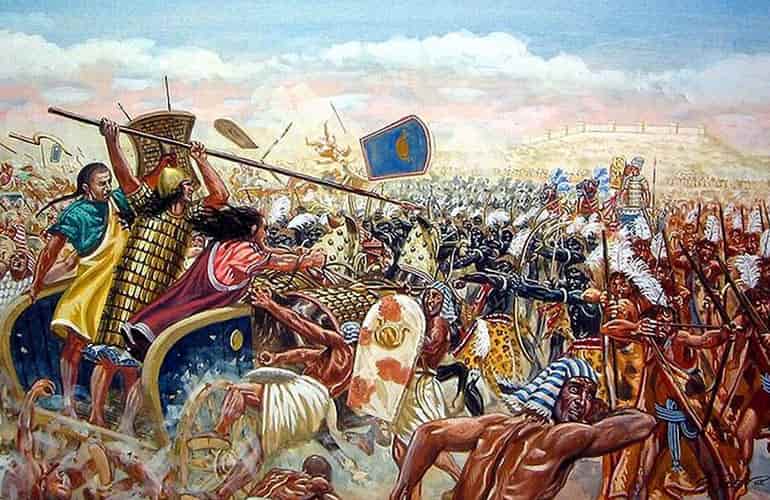
The New Kingdom
from the 18th-20th Dynasty, 1550-1070 B.C when the culture of the country of the Nile flourished again with the territorial expansion, the influence achieved by the pharaohs of the 18th Dynasty in a large part of the Near East and the inauguration of great architectural projects. Towards the end of the 18th Dynasty, the pharaoh Akhenaten
The last pharaoh of the eighteenth dynasty, Horemheb managed to reestablish the internal quarrels generated by the Akhenaten experiment.
Most of the kings of the next two dynasties bore the name Ramesses, and their reigns are known as the Ramesses Period marked by a peace treaty with the Hittites (the second great power in the Middle East), major philosophical and theological advances, as well as the construction of the greatest architectural projects developed since the time of the pyramids, 1300 years earlier. Although most of these kings bore the same name, the successors of RamessesII had to strive to live up to their legacy. After the death of the last Ramsesid, Ramesses XI, Egypt fell back into decentralization. [ Read more about the New Kingdom ]
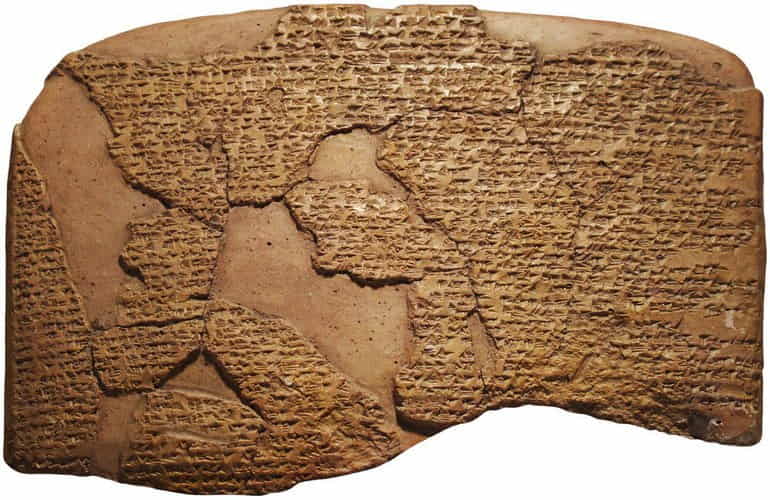
Third Intermediate Period of Egypt
Period of 400 years following the end of the Rameses’ reign in which the country was disputed between native dynasties and kings originating from Libya and Nubia It was not until 650 B.C.
Late Period of ancient Egypt
A period of 200 years in which Egypt staggered between Persian rule (XXVII dynasty) and short periods in which native pharaohs again achieved control (XXVIII – XXX dynasties). In 343 B.C. the Persians conquered Egypt for the last time, ending the reign of Nectanebo II, the last native Egyptian to rule his country until the 1952 revolution.
Hellenistic period
When Alexander the Great destroys the Persian Empire in 332 BC, he gains control of Egypt. After his death in 323 B.C., the reign of Egypt passes to one of his generals, called Ptolemy. Although of Macedonian origin, Ptolemy and his descendants ruled Egypt like pharaohs. The country prospered during the 300-year Ptolemaic reign (323-30 BC), with a powerful centralized government and a program of reconstruction and renovation of ancient monuments.
Ptolemy’s reign ended in 30 BC when the coalition between Mark Antony and Cleopatra VII was overthrown by Octavians Augustus, later to become Caesar Augustus. Egypt becomes a province of the Roman Empire. Although the ancient customs continued under Roman rule, which lasted for the next 400 years, Egypt gradually lost its ancient identity, first with the conversion to Christianity and then to Islam in 641. The Roman conquest in 30 BC is generally regarded as the endpoint of the Ancient Egyptian civilization.
Political and Social Organization in ancient Egypt
Egypt’s political and social organization is reflected in both its religion and art. There is no stable political organization at all times. It is an absolute monarchy ruled by the Pharaoh, who is considered as a god and who is represented with a series of characteristic symbols:
Arms crossed over the chest; in one hand holding (Crook and flail) a scourge with three golden fringes and in the other a curved scepter vestige of the life originally led by the Egyptian people when they were nomads. These symbols will also be worn by the god Osiris.
A false beard for certain ceremonies, which was pointed, protruded and sometimes ended in a small curve.
The Nemes, a grated cloth that he wears on his head girded on his forehead and that falls on his shoulders in a more or less triangular shape. This attribute can also be carried by other members of the royal family, to distinguish it only the pharaoh will carry the cobra.
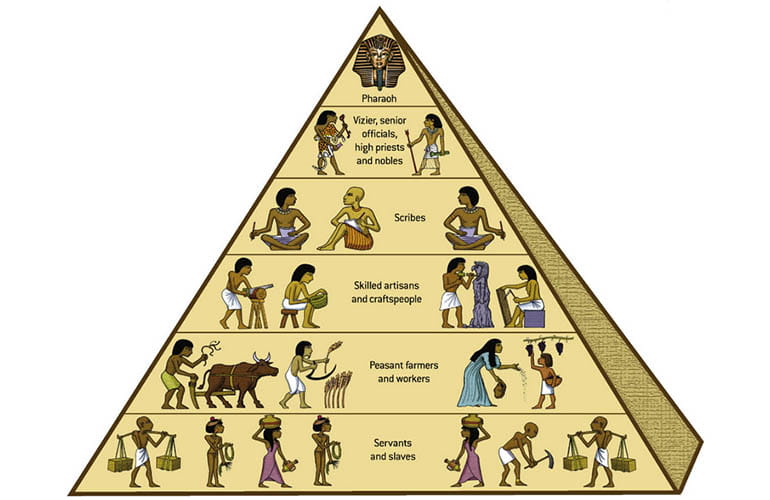
The pharaoh is surrounded by a series of characters that help him to rule. They are related to the nobility and are the ones who carry out the administrative and political tasks.
A social scale below these nobles would be the people, formed by farmers, merchants, and craftsmen, among which there are different categories and different economic levels. There were also slaves.
Finally, there is a social class that has an extraordinary power that is the clergy or priestly. It has a great symbiosis with the pharaoh, which provides them with land and wealth in exchange for maintaining the divine character of the pharaoh.
They live around the temples, but they also have great importance in the court. There are different categories among them and the high priest stands out. They are related to education since the schools are close to the temples.
Among the group of officials related to the nobility, the scribes stand out. They are the most cultured characters in society. At first, they belonged to the royal family, but later they could come from any social class. They are very close to the king and also have the function of viziers. Some of them were scribes-priests.
It is a society that is going to complement and help each other even among different classes and that explains its long duration and the good development of the arts.






